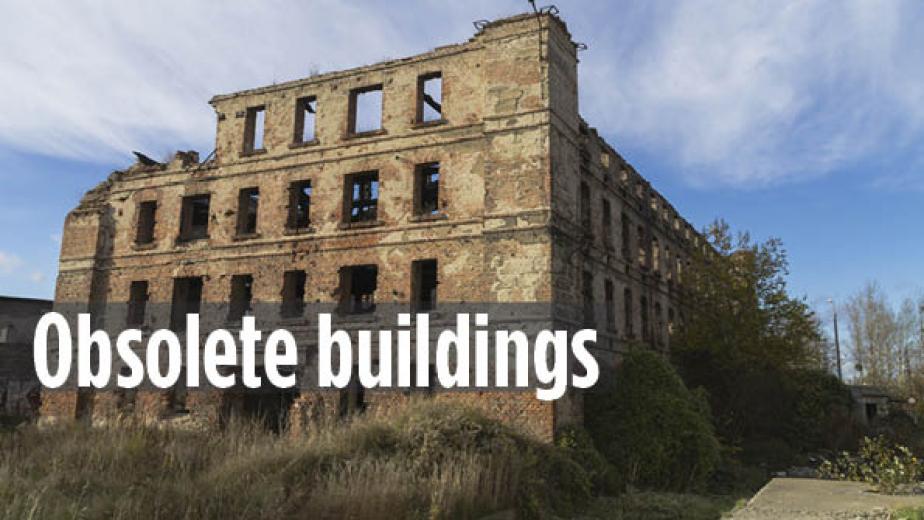1 10
1 10
ADVERTISEMENT
10. Obsolete buildings
As consumers demand faster delivery of products, and manufacturing technologies advance, factories, warehouses and distribution centers need to adapt, which translates to renovating existing structures as well as new construction.
9. E-commerce
E-commerce continues to grow in popularity, taking products from bricks-and-mortar stores and necessitating more warehouses. Plus, multiplatform retail is on the rise. According to a recent SmartCom survey, 56 percent of e-commerce shoppers use desktops and laptops as well as smartphones and tablets to access digital content online, including e-retail sites and apps. This means a greater need for third-party logistics—integrated operation, warehousing and transportation, including the growing use of drones—to meet delivery service requirements.
8. Panamax
The widening of the Panama Canal is already spurring improvements to and expansions of many ports, including Los Angeles and Long Beach and New York City and New Jersey. Plus, a proposed $500 million rail yard near Los Angeles could curtail the current need for trucks to carry containers inland to Commerce to be loaded onto trains. Plus, ships will have easier access to the ports of Houston, Miami and New Orleans.
7. Improved metroplex economy
Large metropolitan areas, especially those that aggregate two or more cities, is full speed ahead, which is boosting industrial operations. With the return of speculative construction, several large distribution centers are currently being built—including the Penn Distribution Center.
6. Rising land prices and higher tax rates
In many instances, higher rates are pushing industrial development into submarkets, sometimes even as far away as in neighboring states. Metrowide vacancy will continue tightening, allowing operators in submarkets to make gains in rent.
5. Digital manufacturing
The latest tech sector to emerge, 3D visualization, is growing rapidly, and will further strengthen the industrial markets of distribution hubs. That’s especially true for Chicago, already one of the largest U.S. distribution hubs, thanks to its recent designation as the site of a digital manufacturing institute. Already Chicago is showing a rebound in speculative construction.
4. Increased imports
More and more of America’s imported products are the types that need to be stored in warehouses, creating a stronger need for distribution space. Import growth is forecast to be particularly positive for California’s Inland Empire, Atlanta and Dallas.
3. Federal policy
Following several years of bond buying, the Federal Reserve has added more than $4 trillion to its balance sheet for its quantitative easing program. Results have been mixed. The Fed had been buying back U.S. Treasury notes and buying Residential Mortgage-Backed Securities at $85 billion per month. But at the close of 2013, the Fed began to cut monthly purchases to $10 billion. So far, inflation has not resulted as was feared, but is still a possibility. If mortgage rates for industrial property rise, that could push cap rates up. Conversely, that threat could also boost sales in industrial buildings in the short term. But if the Fed pullback continues without inflation being created, then confidence will rise and industrial sales and leasing deals should speed up. Also, when the Fed begins to raise interest rates once again, debt service on Treasuries will increase, which will create further problems with the national deficit, which stood at $680 billion at the close of 2013. At this point, how that would impact industrial absorption is anyone's guess.
2. Weather wildcard
The severe winter of 2013-2014 significantly impacted productivity and economic activity in the first quarter of 2014, although personal consumption continued. All in all, the economy took a tumble last year and has been gaining momentum since last winter. New supply is increasing, but will still fall short of demand. The industrial sector is expected to tighten up as we move toward the next winter season, pushing up rentals. And how the weather will fare this time around is, at this point, a hotly debated topic.
1. Economic circumstances
Industrial growth correlates with job growth, and so far, this has been a “jobless recovery.” The unemployment rate is gradually lowering, but that’s partly from people giving up on searching for full-time jobs, rather than the creation of new jobs. There has also been a significant shift to part-time employment due to job seekers making due with one or more part-time positions and companies hiring more workers for under 30 hours per week to avoid the costs of the Affordable Care Act. The good news is new job creation peaked in April at 304,000, according to the Dept. of Labor, and although it fell to a preliminary figure of 142,000 in August, net job growth is becoming more consistent month-to-month.

